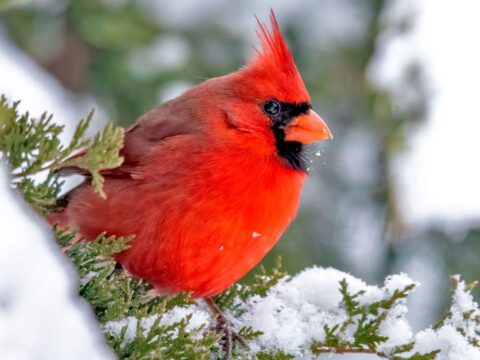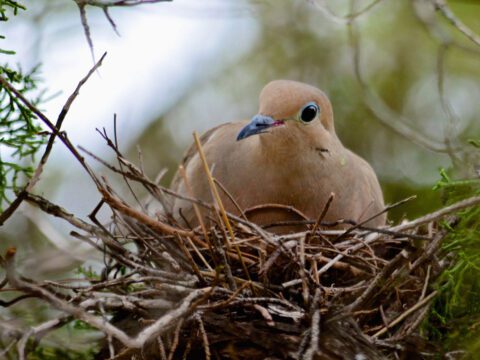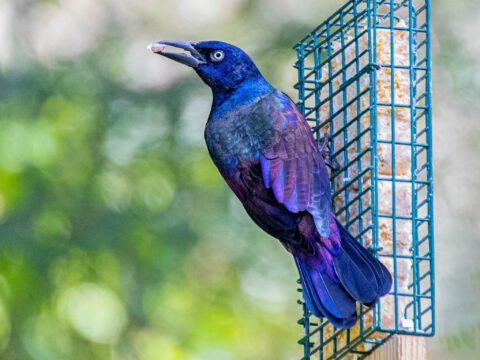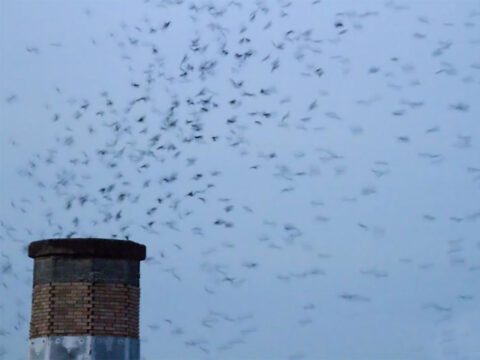Emptying the Skies: Q&A With Directors of Film on Songbird Hunting
By Hugh Powell
April 22, 2015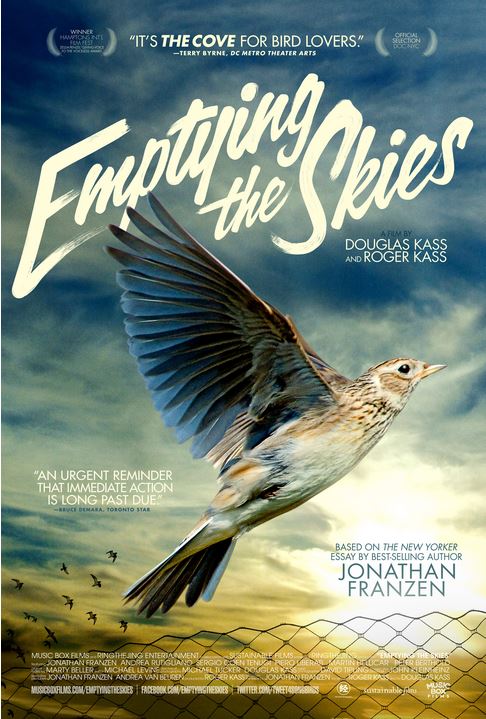
A documentary about songbird migration and illegal hunting in Europe is out in the iTunes store. Emptying the Skies—named for and inspired by a 2010 Jonathan Franzen article that exposed the scale of the problem—is a fascinating and at times harrowing look at the clash between cultural traditions and new environmental realities. (Find it on iTunes here.)
It’s also a thought-provoking exploration of the nature of activism. It centers on three Italian members of a European organization called the Committee Against Bird Slaughter, each with a different background. One is an articulate environmentalist; another a vegan animal-rights activist; the third a banker from Milan. But for each of them, something about the scale of hunting and the helplessness of the songbirds struggling in their traps compels them to move beyond political protests. They sneak onto private land (although they often alert the local police to their plans ahead of time), destroying traps and risking dangerous confrontations with the landowners.
Though the film is solidly on the side of the activists, it provides some balance by airing the side of the hunters and trappers. Some turn out to be elderly men and women cherishing a link to the past; others are loud and violent. The film suggests that others are linked to organized crime.
The story unfolds through interviews with the activists and other players, and it’s enlivened by beautiful cinematography filmed throughout a year across France, Italy, and Cyprus. Interspersed are many shots of birds caught and sometimes suffering in a variety of low-tech, often cruel snares. The footage is not always easy to watch, but the activists are ultimately uplifting in their attempt to balance direct action with nonviolence, and their conviction that things are getting better as a result.
We got an inside look at the film through a Q&A with the film’s directors, Doug and Roger Kass. Read on for their take on filming during sometimes-hostile field operations, what makes the activists tick, and whether the film is ultimately hopeful.
Cornell Lab: Where are you from, how did you find out about this issue—and what made you want to make this film?
Roger Kass: Born and raised in Bedford, New York, I have a background in law and movie production. I first learned of the issues presented in Emptying the Skies by reading Jonathan Franzen’s story in the New Yorker magazine and wanted to make a film about it to bring these terrible truths to a larger audience.
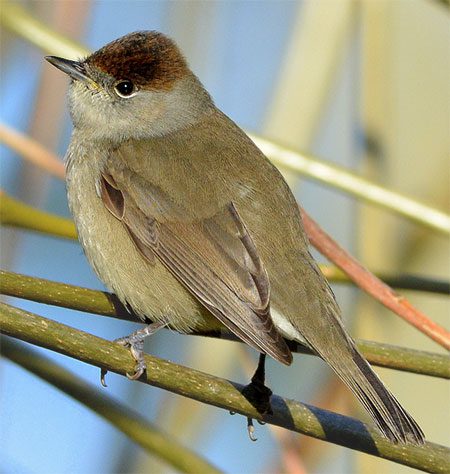
The main characters in the movie are environmentalists and people who love animals, but they don’t seem like bird watchers exactly. What motivates them to take this interest in tiny songbirds? Follow-up question: they are all men. Why do you think there were no women?
Doug Kass: As is often the case, there were a lot of things we weren’t able to put into the final film. Most CABS members we met were very passionate bird watchers and had extensive lists of sightings, as well as favorite locations, and bucket lists. You could describe them as “extreme bird-watchers,” because unlike most birders, they come into physical contact with the birds.
As much violence as there is in the film against the birds, and the CABS members trying to save the birds, it’s only a sampling of what happens in the field. It’s extremely dangerous, and common that physical beatings take place. We chose to focus on three guys who have a very tight bond and rely on each other in very stressful situations, but there are also many women who go on missions with CABS. They are brave and skillful and very resolute. In some locations women are a special asset to the team because poachers have no problem attacking men, but when it comes to women, they don’t know how to proceed. That too though, is not always the case. It’s also worth mentioning that there are volunteers from all over the world who feel this work is important enough to join in the effort. Obviously we could not represent everyone.
One of the brave women who we filmed but ultimately were not able to put into the edit was the mother of one of our principal subjects– Andrea. Mothers around the world will go to extremes to be with their children. In this case, we filmed Andrea’s mother on a mission in Cyprus, the most dangerous of all locations. Since Andrea is almost always out in the field, she felt like this would be one of the only ways to spend time with him. She was fearless.
The movie focuses on an organization called CABS that takes direct action to destroy bird traps, and trespasses on private property in order to do it. A second organization, BirdLife Cyprus, seems more interested in a non-confrontational, political solution. Which of these approaches do you feel will be more successful in the long run?
Doug Kass: While the two organizations do have their differences, they do a lot of work together. Their final goal is very much a common one. As with many environmental issues, it’s going to take the work of a lot of people, and a lot of approaches. I think both organizations are important and valuable to the cause. One thing to bear in mind about CABS though, is that they also do more conventional political work; lobbying, and passing on information behind the scenes. At the same time, they feel that by taking the risks there’s a chance that people will take notice, and of course they’re right.
The activists risk being threatened or attacked by hunters, and the film recounts a couple of altercations that came to blows. Was the camera crew ever attacked, and how did you feel about the risks you were taking?
Roger Kass: During our first trip to film in Cyprus, the cameraman/director and I were filming the activists dismantling illegal traps when we were chased by a band of poachers for over an hour. They were in trucks and we were on foot and it was very scary as they closed in on us, violently cursing and threatening us. The police arrived in time to prevent bloodshed on that occasion but it was very close and we were very shaken. The CABS activists we followed were not always so lucky, however, and have been violently attacked in Cyprus and elsewhere repeatedly. It’s really a wonder none of them have been killed yet, since they’ve been shot at, stoned, clubbed, and beaten up so many times. I have to say that I was a bit naive about the potential to be harmed when we first began the film and once I fully realized how dangerous the undertaking was, I questioned the wisdom and sanity of it all many times, yet still pressed ahead. At a certain point you just give yourself over to self-belief and fate.
In making a film about the natural world, was it a difficult decision to show so many scenes of birds suffering or dying in traps? How did you balance this in the movie, and do you feel in the end that the movie is hopeful or mournful?
Doug Kass: It was definitely hard to see the animals suffering. Through CABS’ archive and our own filming, there were many more images than we could use, which is sad, but I think the film strikes a good balance.
The ending, I like to think, offers some hope. I also would like to think that it inspires others in some way or another. If it does that, then of course there’s hope.
You can find the Emptying the Skies trailer in the iTunes store here.
SPECIAL NOTE FOR NEW YORK CITY: Thanks to a donor, free tickets are available to the film’s opening run in New York City this week. Claim your two free tickets while supplies last.
More Cornell Lab movie reviews:
- Pelican Dreams: The Cornell Lab Movie Review
- A Birder’s Guide to Everything: Our Movie Review
- Birders: The Central Park Effect
- The Big Year: Our Movie Review

All About Birds
is a free resource
Available for everyone,
funded by donors like you
American Kestrel by Blair Dudeck / Macaulay Library

